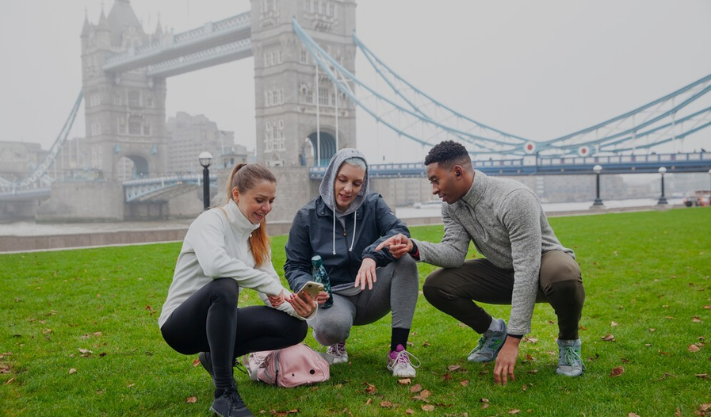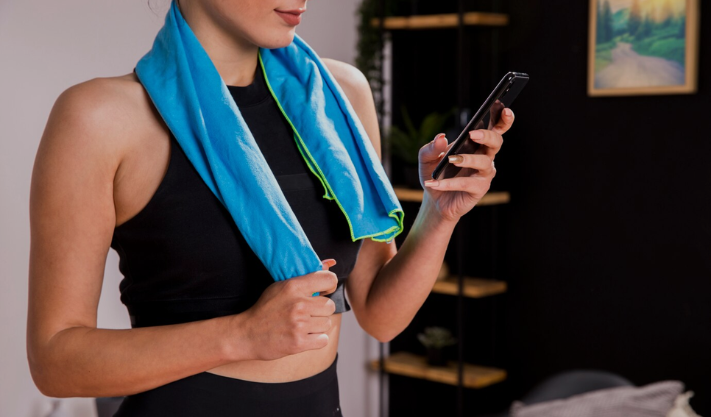Perfect waves with just a button press: enjoying a break at Scotland’s first inland surf resort
Lost Shore Surf Resort near Edinburgh is the largest wave pool in Europe and a great place to learn surfing.
The sun shines on the lagoon as I squint to see the wave coming toward me. I’m lying on my large foam surfboard, ready for the wave. My instructor, Owen, told me, “Paddle three big strokes to catch the wave.” I do that, pop up, and suddenly I’m surfing, arms out, gliding, smiling—until I fall flat into the water.
I stand up, grinning, and shake myself off like a wet dog. Owen gives me a high five and offers a few tips about my footwork. I paddle back out to try again.
I’m not on a beach in California, though the kids skating along the promenade might make you think so. Instead, I’m at Lost Shore Surf Resort, located in a former quarry in Ratho, just 25 minutes from Edinburgh.
This £60 million, 25-hectare site is home to Europe’s largest wave pool, creating perfect, artificial waves for surfers of all levels. The waves are powered by a wave generator, and the water comes from a nearby canal, is cleaned, and then returned to the environment.
Surfing is very addictive, no matter how skilled you are. All you think about is catching the next wave.
Lost Shore is Scotland’s first indoor surf resort. It has luxury pods and lodges, a bar and restaurant by the water, and a wellness center. Dog walkers pass by piles of surfboards, looking at the new place with interest, while surfers who are done for the day struggle to take off their wetsuits (there’s no easy way to do it) and head straight for the sauna.
The main issue here is that surfing needs water, and the water in Scotland is usually very cold. I’m from Edinburgh, and with it being November, I thought about this too. But once I put on the thick wetsuit, boots, and gloves (which are plant-based!), I quickly forgot about the cold. Surfing is a physical sport that involves wading, paddling, balancing, and sometimes falling. I got so warm during my session that I even took off my gloves.
You might wonder why someone would build a wave garden in a coastal city.
“Nature doesn’t always give us good waves,” says founder Andy Hadden. “Here, we can have perfect waves whenever we want. The surfing community really needs a place like this, especially when the ocean is calm. The best waves to surf are the big, barrel-shaped ones, but they’re rare in the ocean. Here, we can create them at the push of a button.”

Hadden says the same applies to beginners and those at an intermediate level. “We hope to see a lot of people start surfing who never thought they would.”
I’m still a beginner, though I’ve had a couple of trips to the Coast to Coast surf school at Belhaven Bay, just east of Edinburgh. Being in the ocean, surrounded by whales, looking at the endless horizon, and catching waves that started in faraway storms is always special. But learning to surf in a controlled environment is one of the best ways to start.
Curro de Laca, who runs surfing at Wavegarden and helped design the lagoon, says: “This is never going to replace the ocean. It’s not meant to do that. But it’s the best place for surfing fitness. You need to practice to build muscle memory. Then when you go back into the ocean, your body will know what to do with the waves.”
Lost Shore is more fun than most gyms. There are more people giving the shaka sign and cheering, and fewer protein shakes – but Curro’s point is still valid. Having a wave pool like Lost Shore doesn’t make me less likely to visit Belhaven Bay again in the future. In fact, it makes me want to go back even more. As I float in the water watching surfers who are much better than me, it’s hard not to imagine trying this again in the open sea.
I try to stand up on a faster wave and fall off my surfboard in a clumsy mess. It may sound tough, but surfing is really addictive, whether you’re good at it or not. It’s not just the rush of energy you feel when you catch a wave, but the total focus it requires. When you’re surfing, all you think about is the next wave, partly because you want to catch it and partly because if you don’t, it might hit you in the face.
This will never replace the ocean. It’s not meant to do that. But it’s the best gym for surfing fitness you’ll find. — Curro de Laca
I still have a long way to go to become a good surfer (my crashes would prove that), but as my session ends, I catch “the speedy wave” and ride it back to the promenade, dreaming of the waves that are waiting for me out there.
“The north shore of Scotland has some of the best waves in the world,” Hadden says. “Ask any Hawaiian surfer, and they’ll tell you there’s no difference, except for the temperature. On the east coast, we have some of the best waves for beginners. We want to encourage people to get out to the ocean and learn with these clubs and schools.”

After drying off, I head to the little pod where I’ll be spending the night. It’s a cozy place, designed by a company called Armadilla from Edinburgh, and its shape reflects the name. The pod faces the ocean. Inside, there’s a comfy king-sized bed, a great speaker system, local Machina coffee, and lots of lighting options.
You might wonder what to do at a surf resort after surfing. There’s a big indoor climbing center, the Edinburgh International Climbing Arena, right next door, but I’m too tired for that. Instead, I decide to eat. The resort’s canteen has three different dining options that change with the seasons. I enjoy a huge slice of pizza from Civerinos, a popular place in Edinburgh, followed by a big plate of roast potatoes and cucumber salad from Five March in Glasgow. At the table next to me, some surfers are watching videos of their waves while I eat a steak taco from Rafa’s Mexican diner. Then, I head back to my pod to watch Point Break (what else?).
Keanu Reeves’s character, Johnny Utah, sums up the appeal of surfing: “I’m drawn to it, or something.”
The resort is quiet at night, with no more waves and the day visitors leaving. When I wake up at 9am, I open the door to see a new group of surfers catching big waves. It’s an exciting sight. I had planned to have breakfast, grab a coffee, try climbing at the EICA, and then go home, but instead, I decide to surf again.
Stuart Kenny was hosted by Lost Shore Surf Resort. Surf sessions cost £55 for adults or £45 for kids for 60 minutes. Surf lessons are £60 for adults or £50 for kids for 90 minutes. Waterfront pods cost £175 per night, and waterfront lodges are £250.
Published: 22th November 2024
Also Read:
Mental health patients harmed by distant treatment centers
MPs to summon Elon Musk on X’s role in UK summer riots
Drivers warned of snow and ice during UK rush hour























